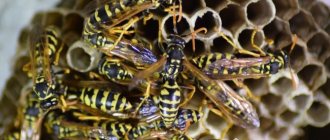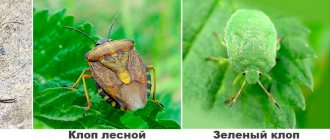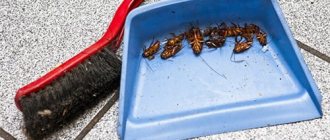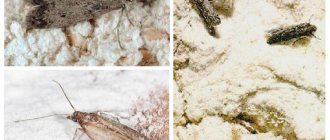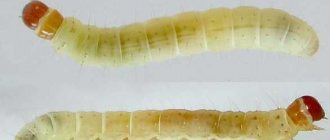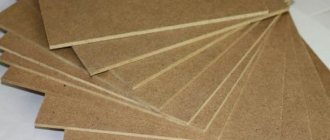In the spring, unwanted neighbors often appear on a summer cottage or in a private house - wasps, bees and hornets, which are dangerous to humans, wooden buildings and garden trees. To avoid stings and damage to structures, it is important to know how to get rid of hornets and prevent them in the future. Traditional methods, pesticides and mechanical destruction of nests can help solve the problem.
Hornets are large insects that cause fear with their appearance, and their bites are dangerous to life and health. In order to protect yourself and your site, it is important to know how to deal with pests and destroy their nests
The article contains effective methods for exterminating pests, and also presents effective preventive measures that will help prevent the occurrence of such a problem.
Who are hornets
The family of social wasps is a colony of insects that live in large families of up to several hundred individuals.
It is rallied around the queen, which lays eggs. Working females and males provide food for the larvae and the queen. Hornets are the largest representatives of the wasp family. The body size of the male is 18-24 mm, the uterus is 30-35 mm, the Asian species reaches 55 mm. Externally, hornets are similar to their relatives, but are noticeably larger than them. The color of the hornet is distinguished by the addition of brown on the back and base of the abdomen. The main characteristics characteristic of wasps are also present in them - a thin waist, membranous wings, strong jaws, and a sting with poison.
Apiary protection
A person and a hornet can exist peacefully only if their homes are located at a great distance from each other. If we talk about the proximity of hornets and bees, then this option is a priori not possible, since the first of them love honey and bees as a delicacy.
They catch bees when they are near the hive or when flying out to collect nectar. Insects carry such prey to the nest to feed to the larvae and the queen. In the case of a large number of insects, the apiary suffers greatly - one individual can kill 30 bees at a time. If large wasps have appeared on the site, then you need to remove or drive them out as quickly as possible.
Hornets nest
Insects have spread throughout the European part of Russia; they can be found in Siberia, Transbaikalia and Primorye. In the spring, when the weather is consistently warm, the hornet queen makes reconnaissance flights, choosing a place for a nest. She is looking for a secluded refuge that will protect her family from bad weather and enemies. The favorite place to build a nest is tree hollows. In their absence, the queen begins construction under the roof of a house or outbuilding.
The material for construction is the bark of young branches mixed with saliva. The queen lays eggs in the cells of the honeycomb. After a week, larvae emerge from them. The queen feeds the first generation alone. By July, the workers grow up and take care of the nest. The peak number of insects is observed in August-September. At this time, young queens appear and mating with males occurs.
Attention. The lifespan of working individuals is 3-4 weeks, the queen lives for 1 year.
Locating the Nest
Regardless of the chosen method of destroying hornets, the first priority is to find their nest.
In some cases, this process does not take a significant amount of time or effort, and the nest can be found somewhere near the site, for example, in trees or in utility rooms; it is simply impossible not to notice it.
However, situations arise when the hornets’ home is securely hidden, and it is not possible to monitor where they are flying; in this case, you can use the old and proven method of determining the location of the nest:
- Hunt down one of the hornets and knock it down with a tennis
with a racket, and it is important not to kill him, but only to stun him. At the same time, care must be taken so that his relatives do not consider this a manifestation of aggression and go into an active attack. - Wear a thick leather or rubber glove on your hand to prevent the possibility of a dangerous bite.
- Take a long colored ribbon or thread and tie it around the stunned insect.
- Wait for the moment when the hornet comes to its senses. After this, he will go directly to the nest, and, thanks to the noticeable tape, it will be easy to track the trajectory of his flight.
First, you can try to wander around the area and try to locate the nest visually.
It is recommended to pay attention to the following places that these insects often choose to build their homes:
- Trees, especially if they have spreading branches that reliably hide the nest from prying eyes.
- Old stumps.
- Attics, sheds and various utility rooms , where people look extremely rarely and do not disturb these inhabitants.
- Under the roof of residential buildings.
- In holes dug in the ground. At the same time, the hornets themselves actually never create tunnels on their own; they use those that were made by other types of insects or underground animals.
Hornet danger
These insects resemble wasps in appearance, but are somewhat larger in size and have characteristic brown stripes on their backs. It is worth noting that hornets are more dangerous in a situation where they need to protect their home. If a person is attacked by a swarm, then in most cases, emergency medical attention is required. The fact is that the venom of this insect can cause an acute allergic reaction, accompanied not just by swelling of the bite site, but also by swelling of the internal organs, and in some cases even kidney failure.
Important! 10 hornet stings at a time are enough for an adult to die, let alone a child.
If the queen hornet decided to build her nest near the apiary, then with a high probability we can say that the hive will soon be destroyed. Therefore, beekeepers know that the sooner they get rid of an unpleasant neighborhood, the better. This can be done using various means that hornets are afraid of, as well as proven methods.
The danger of giant wasps
Despite all the fears, the hornet is a peace-loving insect; they bite only when necessary to protect themselves and their own nest. Those who approach their home at a distance of less than two or three meters are perceived as aggressors and are attacked with stings by the guards.
When bitten, poison is injected, the composition of which includes toxins - they cause severe pain and allergies in the body. They are especially dangerous for the immune system of children.
Note that the consequences of a bite can be different - it all depends on how much poison was injected, as well as the characteristics of the human body. Everything can be done with the usual swelling and pain, some experience anaphylactic shock, and there have been cases of death.
What to consider when exterminating hornets?
Before you begin to expel or destroy insects, it is necessary to determine their habitat. Most often, hornets prefer to settle and build their nest in places such as:
- barn;
- lumber room;
- attic;
- barn;
- house walls;
- trees;
- ground (burrows of other insects).
Knowing these habitats, you can choose the optimal method and means that hornets do not like. Usually this is either physical impact or chemical agents that quickly destroy them.
Precautionary measures
It is advisable to begin the fight against dangerous insects at night or early dawn. During this period, their activity decreases somewhat. But it is important to remember that they are still active and, in case of danger, can attack. Therefore, you need to protect yourself with the help of protection measures such as:
- clothing that completely covers legs and arms;
- face brimmed hat;
- respirator (when using chemicals);
- leather or thick rubber gloves.
Ways to get rid of hornets: insecticides
In a specialized store you can purchase any product whose label indicates that it is used against hornets. The principle of action of insecticides is the same, so you can purchase the simplest option.
Expert advice! There is no need to buy a universal product whose instructions do not indicate that it is used against hornets!
The most effective pesticides that are dangerous to insects are the following:
- Dichlorvos - an aerosol is sprayed near the nest. Most often used in a barn, attic or room;
- Delta Zone and Get are capsules, the contents of which must be diluted in water and the hornet’s nest must be sprayed with this solution. The infected insect transmits the toxic substance to another 10 individuals. The effect is long lasting;
- Solfisan is a special emulsion that can be added to bait for insects or to treat their nest;
- Taran - the product is diluted in water and the insect habitat is treated with a spray bottle.
The procedure for using insecticides is quite simple. It is necessary to wear a respirator and protective clothing. Then treat the nest (habitat) with a chemical and leave it for several days. Hornets that fly into the nest after treatment will also die. Insecticides act almost instantly, so you don’t have to worry about their attacks. But still, it is better to approach the nest during a period of decline in insect activity.
How to poison, how to destroy hornets
How to get rid of hornets
There are mainly two main methods used.
Use of chemicals:
- Dichlorvos. Consumers are offered a wide variety of repellents and sprays, for example, Dichlorvos is the most effective and inexpensive. Using Dichlorvos or any other toxic aerosol, you need to inject the poison into the nest and immediately cover the entrance and cracks with clay.
Dichlorvos against wasps and hornets
- Poison. It helps successfully if you spread Colorado potato beetle poison near insect nests. It is necessary to carefully work with toxic drugs so that pets do not have access to them.
- Meat. An effective method used by experienced beekeepers in apiaries is to accustom hornets to meat. To do this, you need to spread pieces of fresh meat with sodium arsenic acid (“Paris greens”).
- Ammonia. Engage in such activities in the spring, at the beginning of the summer season, when only the queen and several adults are in the house. In this case, you can carefully throw the nest into a bucket or tank with a stick and throw in a rag soaked in ammonia.
Selection of physical elimination methods:
- Trap No. 1. To prepare a simple trap with your own hands from PET containers, you need to make a cross-shaped cut at the top of the bottle and bend the edges inward. In this case, the hornets will be able to fly into the trap, but it will be quite difficult to fly out. Place water, beer and sugar as bait in a bottle in a 1:1:1 ratio.
- Trap No. 2. To make a trap, you need to remove the top part of the bottle, unscrew the cap and insert the back side of the top part into the main part. Fill a bottle with sugar, water, beer or sweet jam as bait.
Trap for hornets and wasps
- If the hornets' nest is located away from buildings, residential areas and forests (so as not to cause harm!), you can put a lit torch into the hollow in the evening.
- A simple vacuum cleaner will become a worthy ally in the fight against hornets in the country. Connect 2 suction pipes to the vacuum cleaner. After the equipment is turned on, the hornets will react to a loud sound and fly not towards the person, but towards the vacuum cleaner. The hornets fly up to the device, it is sucked inside, hitting the bends of the tubes, the insects become non-aggressive, lethargic and harmless. Now you can remove insects from the dust collector and get rid of hornets.
Hornet traps
A variety of hornet traps are very popular; stores today have a wide range of similar devices.
However, you can make them yourself; one of these options is discussed in detail below:
- Prepare a plastic bottle with a volume of at least 1.5 liters and cut off its top part with the neck.
- A fragrant bait is poured into the lower part, which will attract the attention of insects. You can use jam, honey or beer, and also mix these components with each other.
- The top of the bottle is inserted into the bottom, neck down. In this case, you must remember to remove the cover from it.
- As an additional measure, the neck can be lubricated with any oil, after which the trap will be ready. The hornets, flying towards the smell, will get caught inside, but will not be able to get out, since they will look for a way out exclusively along the side surfaces of the bottle. If some individuals get to the neck, they will not be able to get out due to the slippery coating on it.
This is due to the fact that the baits used will also attract the attention of bees, which will die along with the hornets.
Device of traps
A hornet trap will help rid your area of unwanted “neighbors.” Such structures can be installed in gardens or apiaries, even if there are no wasp nests there yet. Scout insects will fall into the traps. They will no longer share information about the new “grain place” with their relatives.
Sugar syrup, compotes or a honey solution are sometimes used as bait, but bees often fall into such traps. To prevent their death, it is better to prepare bait from fermented compote or jam. To attract hornets and wasps, you can use beer and mash. These insects readily flock to the smell of alcohol, and bees “disdain” it.
We must not forget about the “child love” of wasps. If there is meat in the trap, insects, which are constantly in search of food for the larvae, will definitely fall into it. There is also an effective drug for killing wasps - Otos. Saturated with fragrances and insecticides, it attracts predatory insects into the trap. Otos is not dangerous for bees: they are indifferent to the bait.
Trap with meat bait
How to remove hornets and wasps using a meat bait trap? The procedure is simple:
- A film container or similar smooth cylinder is glued to the bottom of the plastic bottle.
- Soapy water is poured into the container so that it does not reach about 4 cm from the top of the container. If the water level in the bottle is higher, the hornet will be able to get out of it. The soap solution must be made from laundry soap so that the liquid has no odor. An insect is more likely to drown in a soapy solution because its surface tension is weaker than that of clean water.
- Pieces of meat or fish are placed on the cylinder cover. Only fresh food should be used as bait: the wasp is not interested in rotten meat.
You need to drill several holes in the bottle. The smell of meat will spread throughout the area much faster. The wasp that flies to it will grab a larger piece. Overloaded, it will not be able to take off and will definitely fall into the water.
Traps with sweet bait
A “sweet” trap against hornets is made from plastic bottles with a capacity of 1.5-2 liters:
- cut off the cone from the container and unscrew the plug;
- a little bait is poured into the bottle;
- the inverted conical part is inserted into the cylinder.
The trap can be attached to the trunk with tape (in this case, the wind will not be able to overturn the lightweight container) or suspended from the branches using wire.
Insects, attracted by the smell of the bait, climb into the funnel. They will no longer be able to fly out of the trap: taking off or crawling along its walls, the hornets will hit the walls of the cone. To make the bait lethal to wasps, a little borax or boric acid is mixed into it.
It is better to use transparent containers to make traps. The insects inside them become disoriented, and the hornets outside are more willing to climb into the bottle if they see their relatives there.
You can make a slightly different design from plastic containers:
- a cone is cut from one of the bottles (0.33; 0.5; 1 or 1.5 l);
- in the body of the other, a cut is made with a cross;
- the cone without a lid is inserted into the cut with its narrow part.
Wasps will crawl into a kind of entrance. The lid from the neck of the trap is not removed. It is unscrewed only before filling the container with bait. Hornets trapped in a bottle will not be able to get out through the entrance: they will try to get out of the container only through the top. A larger container can be equipped with 2-3 tapholes. They, in addition to everything else, will help spread the smell of the bait faster. The entrances can be cut from dark plastic.
Another type of trap is a bottle closed with a cork with holes in the body drilled with a drill with a cross-section of no more than 8 mm. The hornet can climb into the container, but it will not be able to get out of it.
Traps are placed in close proximity to fruit crops.
How to destroy a nest during construction
If the insects have just found a place for themselves and are starting to build a home, then at this stage it will be much easier to remove them from the site. The first parts are simply knocked down with a stick and burned.
The other method does not involve close contact. The stick is soaked in ammonia, vinegar or boric acid and placed in the center of the nest. The Hornets stop building it and go in search of a new place.
Hornet's nest.
Neutralization and destruction of nests
To ensure you get rid of pests, destroy the nest. To find it, it is enough to follow the flight of insects, and then, depending on the location, choose the optimal method of destruction.
Sealing the nest
To destroy the hornets' home, use polyurethane foam. At night, when pests are less active, treat the hive with a sealing compound, thoroughly filling all cracks and holes. The lack of oxygen and the ability to fly out for food will lead to the extinction of all individuals.
To destroy the nest and its inhabitants, seal the evidence. This can be done with polyurethane foam or other sealing compound.
Pouring water
To flood the nest, prepare a bucket filled with water. For maximum effect, add an insecticide designed for wasps and hornets to the liquid. Place a bucket under the nest and gently lower it into the water. The liquid will fill the honeycombs and the insects will not be able to get out of their house, which will lead to their death.
Burning out with fire
Fire will help get rid of a pest nest located in an open area. Douse the home with a flammable mixture (gasoline) and set it on fire. During the operation, make sure that the flame does not spread to trees, dry grass or outbuildings, otherwise you will have to fight not only pests, but also the fire.
Smoke bomb
A smoke bomb (Mukhoyar, FAS, HELP, etc.) will help destroy the nest. The application procedure is as follows:
- Insulate the room and seal all cracks so that insects cannot escape.
- Make sure that there are no children, pets, or food near the treatment area.
- Activate the smoke bomb according to the instructions.
- Clean the room.
Smoke bombs will help control pests. Before use, carefully read the instructions and take the recommended safety measures
Traps and bait
Traps with bait will help get rid of single insects remaining after the destruction of the nest. You can make them yourself using available tools and materials. Spoiled fish, a mixture of honey and beer, and fermented fruit syrup are used as bait.
The simplest trap option is sticky tape, which is used to catch flies and cockroaches. You can do it yourself:
- Cut out small strips of thick cardboard.
- Apply a generous layer of honey or fruit syrup. This will serve as both bait and a trap for insects to stick to.
- Place bait in areas where hornets frequently appear.
- Replace traps periodically and burn old ones.
Homemade traps with bait located in places where insects are active will help you catch single pests.
You can make other traps with your own hands:
- put the bait in a glass jar and close it with a lid with a hole in the shape of a cross and the edges of the cut curved inward;
- Cut off the top of a plastic bottle (1/3) and insert it back with the neck down. Fill the bottom reservoir with bait and place the trap in a visible place;
- Pour the fermented fruit syrup into a large container (bucket) and leave it near the pest habitat.
Preventing the appearance of hornets on the site and in the house
After exterminating hornets in your home or area, take the recommended preventive measures to prevent the insects from appearing again:
- carefully treat the place where the nest was located with poisons or at least ordinary vinegar, place repellent herbs or an artificial nest there;
- place traps on the territory where single insects and queens will fall, which will prevent the construction of a nest in this territory;
- inspect the house and area for places suitable for nesting hornets, seal cracks and holes;
- Throw out garbage and food from pets' bowls in a timely manner - the lack of protein food will make the area less attractive to pests.
In the spring, check all potentially dangerous places on the site where pests can establish nests. Destroy hives in the initial stages of formation, before new insects hatch
The hornets that have settled in the neighborhood cause fear and pose a threat to people. To protect yourself and clear the area of pests, exterminate the insects and destroy the nest. You can do this yourself using mechanical methods, chemical or folk remedies, as well as through special services. After getting rid of the hornets, take preventive measures to avoid the problem from recurring.
How to get rid of hornets in the country
It is necessary to deal with hornet wasps in a country house competently, because some species are rare and can completely disappear with an unprofessional approach.
There are 2 main methods to eliminate annoying hornets:
- Remove the nest from the room.
- Destroy individuals.
To get rid of an insect nest, you need to find where it is located. If the fight will be carried out directly with adult hornets, it is necessary to select the most effective chemical agent or physical method of elimination.
Be sure to protect yourself with personal protective equipment:
- Mosquito net.
- Thick clothing that covers your arms, face, and neck.
- Gloves.
- Protective glasses.
Important! For effective control (if you choose a chemical method of destruction), it is necessary to select a wasp repellent, because Hornets are the largest representatives of this particular genus.
What are hornets and smoke bombs afraid of?
Using smoke bombs to get rid of wasps and hornets can be very productive. This method has several advantages. Firstly, it is suitable for both indoor and outdoor spaces. Secondly, when using a checker, a person moves away to a safe distance and is not in danger of being bitten by angry insects.
Mukhoyar
This method is used to destroy not individual individuals, but the entire nest. Before using the checker, you need to isolate the room and seal even small cracks so that insects do not get into them. During treatment, people and pets should not be nearby. If there is a cage with birds or an aquarium in the room, they need to be taken out.
The following checkers demonstrate the greatest effectiveness:
- Mukhoyar;
- FAS;
- G-17;
- HELP.
If this method is used in a residential area, all adjacent rooms must also be evacuated; toxic smoke easily spreads through cracks in doors throughout the house. You must first carefully study the instructions.
If the checker is to be used in the attic of a garage, shed or basement, you must first clean the room. In addition, all supplies and necessary things that could be damaged by smoke are removed from there. After treatment, it is recommended to remove and wash all clothes, wash your face and hands with soap, and rinse your mouth.
Hornets also have natural enemies. Some species of birds feed on them; ants and large wasps attack hornets. These Hymenoptera are also plagued by small parasites: parasites, mites, nematodes. A very unusual enemy is a certain fungus that enters the insect’s body through the mouth or respiratory system. Developing in the head of the host, the parasitic microorganism leads to his death.
Hornet
Which product helps best in the fight against hornets?
How to get rid of hornets under the roof of a house
Among modern means of combating annoying insects, the most effective are the following chemicals:
- Dichlorvos is the most inexpensive and widely available remedy used to combat almost all insects.
- Aerosol “Dr. Klaus" is developed based on a component that paralyzes insects. To get rid of hornets in your country house, you need to spray a toxic aerosol over the nest (about 10-15 seconds). It is important to do the job using personal protective equipment. To be sure to destroy hornets in the country, the procedure can be repeated.
- “Get” capsules for getting rid of wasps, hornets, and gadflies. It is necessary to dissolve the drug in running warm water and treat the nest with the resulting mixture. The exterminator has a fairly rapid effect, and 1 poisoned individual can transmit the poison to another 8-10 hornets from the hive.
Dichlorvos is the most inexpensive and widely available remedy
- The effective drug "Taran" is designed to combat any insects. To do this, it must be diluted in water and treated with nests and places where there are large concentrations of hornets. The effectiveness of the drug lasts at least 2-3 months.
- Moskitol aerosol allows you to get rid of hornets in your country house, working at a safe distance. The advantage is that you can spray the spray from 5-6 meters. The drug immobilizes insects, after treatment they stop flying and can be crushed.
- There are many high-quality traps on sale, which are mechanical means of killing hornets and other flying insects. Compared to aerosols, the efficiency of mechanical traps is somewhat lower, but during operation you will not have to spray a toxic substance.
Fighting tactics
There are two ways to get rid of an unpleasant neighborhood - by destroying the hornets or their nest. The first option is suitable if the colony house could not be found. The second is more effective; it will get rid of all insects at once. To cope with insects you will have to:
- find a nest;
- take care of a protective suit - thick clothing, gloves, and a headdress with a net;
- purchase chemicals against wasps.
There are several simple but effective ways to get rid of hornets that have settled under the roof of your house. It is recommended to begin any activities in the evening, when it becomes dark. During this period, insects are less active and gather in their homes for the night.
- Carefully approach the cocoon and spray it with foam from a fire extinguisher. The prospector should wet all the honeycombs so that the inhabitants freeze under the influence of carbon dioxide. A nest without signs of activity is knocked down with a tool.
- Take a can of construction foam and pour the substance into the insects’ home. The frozen mass will make it impossible for them to fly out.
- Take a container into which the nest will completely fit. It contains boiling water or water mixed with an aggressive liquid - kerosene, bleach, vinegar. It is necessary to prepare in advance the object on which the bucket will stand. If the cocoon is under the roof itself, you will need a stepladder. The container is brought from below, immersing the nest in it. It is installed on the prepared pedestal and left for several hours. The honeycombs of insects will get wet and fall apart, and they will end up in the water.
- How to get rid of hornets in the attic? Purchase a spray for stinging insects that is ready to use. The following drugs are suitable:
- Dichlorvos is a traditional insect repellent, the active ingredient of the modern composition is a pyrethroid. The drug is produced in various brands, you can use any one.
- Aerosol Dr. Klaus - the poison paralyzes wasps and hornets, making them unable to move. The jet is directed towards the nest for 12-15 seconds. Processing is carried out with doors and windows closed. If not all insects die after the first treatment, the substance is sprayed again.
- MOSQUITALL - high pressure aerosol allows you to reach insects from a distance of about 6 m, which increases the safety of use. The hornet repellent has a quick paralyzing effect.
- You can remove the insects' home using a thick plastic film or bag treated with an insecticidal agent. The cocoon is quickly wrapped in film, its ends secured with tape on the ceiling.
Attention. Like all social insects, hornets communicate with each other. If the nest is threatened, the male guards release an alarm pheromone, causing the entire swarm to gather together and attack the enemy. Don't forget the protective suit.
Drugs
Let's find out what chemicals will help destroy hornets.
"Karbofos"
This insecticide comes in powder or liquid form in canisters. Advantages: efficiency and cost-effectiveness (inexpensive). Valid for 3–4 weeks. Belongs to hazard class 3 (moderately dangerous). The powder is diluted in water according to the instructions, dissolving 10 g of the chemical in a liter of water (a different concentration can be used to combat other types of insects). Then the nest is sprayed at a distance of 3–4 m. “Karbofos” has a paralytic effect on the insect, which gradually leads to the death of the hornet.
"Tetrix"
A professional product that is practically never used privately. The insecticide produced in Holland is used by deratization or sanitary-epidemiological control services.
Chlorpyrifos
This is the basis of widely available chemical control agents against stinging insects, including:
- "Get";
- "Dursban";
- "Forsban";
- "Argan";
- "Xulat."
The specifics of using each drug must be studied before using it by reading the attached instructions.
Medilis-CIPER
For the most functional broad-spectrum effect on such insects, the Russian drug “Medilis-CIPER”, which is a professional insecticide, is very suitable. Features include:
- Produced in the form of a concentrate .
- The effective base substance is cypermethrin (25%).
- Blend for release on the market - bottles of 50, 500 ml. and 5 l.
- In terms of danger, the substance is rated with average scores - class III .
- The concentrate is good for 5 years from the date of factory release.
- The average price for 500 ml is 1534 rubles .
In order to kill hornets along with their nest, you need to make a solution , which is then simply sprayed through a garden spray bottle. The dosage should be observed in the proportion of 4 ml per 996 ml (almost 1 liter of water). Treatment should be carried out through a sprayer with a long boom with a spray nozzle.
Medilis-Super
Another drug with universal effects is also “Medilis”, but only of the “Super” group. Product characteristics include the following parameters:
- Released in the form of a concentrate .
- The active substance is fenthion (24%).
- The product is blended in the form of:
- ampoules (glass capsules) with a volume of 1.2 ml;
- plastic bottles – 10-250 ml;
- containers made of durable polymers - 0.5-20 l.
- The substance can be used for 5 years from the date of release from the factory.
- According to the safety class for human and animal health, the product is in the low-hazard group (class 3) .
- The average cost for a 500 ml bottle is 1,500 rubles .
- For processing, use the same dosage when preparing the suspension as in the previous preparation of the Medilis-ZIPER solution.
Masterlak
Among the professional insecticides produced abroad (European) we can highlight “Masterlak” from Spain . Product characteristics are the following:
- Available in liquid .
- The main ingredients are alpha-cypermethrin (0.03%) and chlorpyrifos (5%).
- Bottles or canisters on the market are available in volumes of 1.5 or 25 cubic meters.
- Safety is average, corresponding to class III .
- After treating the nest and the insects themselves, the substance continues to act in an active state for about:
- 2 months (for surfaces with poor absorption);
- about a month, one and a half with an absorbent surface.
- Valid for five years from the date of production.
- Price 2500 rub. per liter
At consumption, a dosage rate of 50 cm3 is applied. per 1 sq.m. Treatment should be carried out with a ready-made solution, located in a canister or container, until the surface is completely wet.
BROS
A specialized product as a technology that allows you to destroy only wasps and hornets of the Polish production "BROS" acts specifically on specific types of groups of stinging insects. Main characteristics of the drug:
- Production form: spray, aerosol .
- The active substances in the liquid inside the balloon are cypermethrin (0.4%), tetramethrin (0.17%), permethrin (0.17%) and hypernyl butocrid (1.35%), as well as carbon monoxide (2.8%) .
- Low-risk in terms of toxicity to human and animal health ( Class IV ).
- Suitable for use for 3 years from the date of issue .
- After treatment, the toxic effect for insects will still persist for 3-4 days , due to which they will be completely destroyed.
- The average price of a can is 300 rubles . on sale
The product is convenient because it does not need to be prepared individually, and also because its jet length reaches up to 5 meters. This is especially important when treating nests of stinging insects, when it is undesirable to approach them .
Karbofos
For most professionals, the very familiar powdered drug “Karbofos” is considered one of the most effective. In addition, the drug is quite economical and beneficial. The characteristics include the following parameters of the product:
- Form of production - powder .
- The active substance is malathion (related to organophosphorus compounds).
- Blend – bags weighing 60 g.
- After treatment, the drug remains active for another 3-4 weeks .
- According to the hazard class, the drug is in the moderately dangerous (Class III).
- The average cost of the powder is 60-80 rubles.
hits an insect, it first paralyzes it and then gradually leads to death. The powder is diluted in water, and then this solution is sprayed at a sufficient distance (3-4 m) from the nest, the source of the problem. The proportion for preparing the suspension is as follows: dilute 10 grams per 1 liter of water. powder _ If you use a dosage of 4-5 grams, then this dose is most likely not for winged stingers, but for bedbugs and other parasites.
Dichlorvos
A well-known and long-used insecticide. Quite effective and also inexpensive.
Dichlorvos
Dr. Klaus
The aerosol contains poison that paralyzes insects. Thanks to the spraying of the product, the hornets lose the ability to fly and generally move. It is necessary to spray the nest with a jet of product (12-15 seconds of spraying is enough). It is important that both windows and doors are closed during the procedure. This material will tell you how to get rid of burdock on your property.
Dr. Klaus
If the initial treatment does not lead to the complete death of the hornets, it will soon need to be repeated.
Mosquitol
This aerosol is good because it allows you to kill hornets at a safe distance: it is effective even when sprayed from six meters. The product paralyzes insects, which after treatment lose the ability to move.
Mosquitol
Stinging insect repellents
The fight against the winged threat is carried out by mechanical and chemical means. If the home is built on the street, fire will help get rid of it. The material of the honeycomb is similar to paper, so after spraying with kerosene it lights up well. This method is suitable for killing insects that have settled in a hole. The colony in a hollow tree is covered with a potent insecticide and covered with putty.
Factory developments against wasps and hornets
Mechanical methods of dealing with dangerous neighbors include traps. Among the popular models:
Argus Garden - a simple design suspended close to the nest. First, fruit juice with honey or beer is poured into it. The principle of catching insects is simple - they climb behind the bait, but cannot get out. The product is cheap, so after filling you can buy a new trap.
Advice. After 1-2 days, it is worth checking the number of hornets in the trap; if there are very few of them, then the place was not chosen well. It is worth re-hanging the structure.
The Wasp Trap SWISSINNO is offered with bait included. To activate the structure, open the glass and pour the bait powder into the container. Then water is poured to the marked level. Just shake the liquid and the trap is ready for use. Water evaporates over time, so you will have to add new water.
Mukhoyar is a hornet trap that is very easy to make. You will need a 2 liter plastic bottle. Sweet compote, syrup or juice is poured into it (Fig. 1). On the side of the container, mark with a cross the area where the plastic insert will be located. The wall is cut along the lines (Fig. 2). The trap is removed from the package and inserted into the prepared hole (Fig. 3). Cuts are made on the back of the bottle for better distribution of the smell (Fig. 4).
Homemade traps
Ready-made insect traps work effectively, but there is no reason to pay for a container specially manufactured at the factory. It can be easily replaced with a glass jar or plastic bottle. A DIY hornet trap works on the same principle - bait and inability to get out. To make it, you do not need professional skills and tools.
You will need a transparent plastic bottle with a volume of 1,5,2 or 5 liters. Dividing its height into three parts, cut off the upper third with the neck using a stationery knife or scissors. By lowering the cut part inside the container, we get an effective trap. In order for wasps and hornets to fly inside, you will need sweet, slightly fermented bait. What to pour:
- fruit juice;
- sweetened beer;
- syrup with honey;
- soft raspberries.
Attracted by the aroma, small and large wasps crawl into the hole in the funnel, but none can fly out of it. They remain trapped until they die. For a large area, one bottle is not enough; you need to make and place 6-7 traps around the area. The container can be a glass jar with a screw-on lid, in which a hole is cut and the edges are bent inward. To attract wasps, use standard bait.
Advice. Holes are made in the bottles and a cord is threaded to hang on the tree. You can simply place them on the ground. If there are a large number of insects on the site, it is recommended to take a 5 liter container, then you will not have to empty the trap often.
To ensure that the caught insects die, insecticides are added to the bait:
- Karbofos is a broad-spectrum organophosphorus compound. A highly toxic substance is used to kill harmful insects.
- Delta zone - the drug kills wasps 2-4 days after ingestion.
- Aktara is an insecticide with the active ingredient thiamethoxam. Affects the nervous system of insects.
It is dangerous to clear traps of live hornets; at such a moment they can sting. Insects killed by toxins are safely removed from the full trap and then used again. Traps slowly, gradually reduce the number of dangerous neighbors. They can be hung in the area before leaving, and full bottles can be cleaned when you return.
How to get rid of a hornet nest?
The nests of these insects look like large bumps, which are often found under the roof of a house or in the attic. At first glance, they seem to be made of clay, but in fact it is a dense, durable material, similar to paper, which the hornets produce themselves by processing wood.
Did you know? Hornets do not like suburban areas planted with mint, geranium and lemon balm - their minty aroma repels insects.
There are many ways to remove hornets that have taken a fancy to a residential building or attic and pose a threat to humans. First you need to discover their habitat by following their route. Next, take either physical methods of influence or the chemical methods described above.
You can also use the services of special organizations. The fight against these insects must occur quickly and harmoniously, in compliance with safety measures. Hornets secrete special substances, enzymes, that transmit a signal to their relatives about danger, which can provoke an aggressive and massive attack on a person and cause severe harm to his health.
We recommend that you learn about the characteristics of hornets.
Physical methods of struggle
Based on the cravings of these insects for sweets and the characteristics of their behavior, the following measures can be taken to combat them:
- Set up sweet bait. It is recommended to fight in this way with the detection of the first individuals; as a rule, they are female and bear offspring in early April. To do this, cut a plastic bottle into two parts and fill it with sweet fermented syrup, the smell of which will attract insects and will no longer be able to leave the bait.
- A pole or net that is used to pick up the nest and place it in a bag, and then destroy it .
- Small nests are removed with a vacuum cleaner. The dust bag is then burned.
- Fill the hornets' honeycombs with polyurethane foam, which will block all exits from the nest.
- You can blow out all the holes in the nest with foam from a fire extinguisher. After this treatment, the hive is knocked down and destroyed.
- Flood the nest. To do this, it is immersed in a bucket of hot water. It is also diluted with insecticide, vinegar, and gasoline or kerosene or other aggressive liquid is added. Gradually the nest fills and becomes saturated with moisture, and the insects die.
- Pour liquid poison into the nest and seal the exits with putty or tape.
- In an open space, the nest can be sprayed with gasoline and set on fire .
- Hang red chili peppers, the smell of which will drive the hornets away from the area.
If a nest is found under the roof, in order not to damage the living space, it is recommended to house the hornets:
- Remove in winter or early spring, when only the queen is present, which does not pose any particular danger. All remnants of the nest must be carefully removed and disposed of.
- Smoke out insects by lighting special insecticidal plates and causing them to smolder. In this case, it is better for people to leave the premises so as not to get poisoned. The death of a family may not occur immediately, so the procedure may have to be repeated several times.
Preventative work is carried out in winter:
- repair and seal cracks in the roof;
- fill the cracks in the roof and attic with polyurethane foam;
- install ultrasound to repel unwanted insects;
- regularly inspect the roof and attic to exclude even a small nest of insects.
Important! If the hornets manage to escape while fighting their nest, they will behave aggressively - so it is necessary to immediately take refuge in a safe place.
Calling the relevant services
Professional assistance is provided by special sanitary and epidemiological services or organizations providing deratization services (the use of comprehensive measures to exterminate rodents and insects).
- Turning to specialists has a number of advantages:
- High-quality processing carried out by specialists, taking into account the specifics of the location, scale of the nest and room.
- Saving time, since professional removal will take several hours, there will be no need to wait until winter or collect hornets for bait for a long time.
Derat control specialists can use:
- professional insecticides, gassing nests;
- hot and cold fog to kill hornets;
- pheromone traps that attract adults.
What to do if a hornet flew into your house
Ants with wings in the house - how to get rid of them
Sometimes hornets fly into the apartment. They may be lured into rooms by the aroma of fruits, vegetables or sweets. The insect will no longer be able to get out into the wild on its own. You should not try to drive away the insect by making sharp waves of your arms, as such behavior can be regarded as an attack.
To catch one hornet, you need a glass jar. The insect is carefully covered with the container, after which the lid is screwed on. They release the “prisoner” already on the street. If you don't have a can, you can use a matchbox or fabric work gloves.
If hornets have become frequent guests in the rooms of an apartment or house, you need to look for their nest. Often, they settle in attics, under the roofs of sheds, sheds or in trees. If the hornets' place of residence is located in an accessible place, it must be destroyed.
Hornets nest
Insect control methods
There are many different ways that work differently. Some act quickly, others take several weeks. But if you decide to get rid of pests completely, it's important to consider them all. You can choose them, regardless of whether they fly to you from your neighbors or have made a nest in the attic. There will be three active methods in your arsenal:
- Complete elimination of the nest.
- Using traps.
- Poisonous baits.
One of the fastest ways is to eliminate the root, that is, the nest. But this is not the safest way. You can bring it to life when it is on your territory, you have found it and you can get to it. In the case when pests fly to you, or their home cannot be reached, you need to resort to lengthy methods - poison and trap.
What you need to know about hornets
If we talk about hornets in relation to humans, they are quite peaceful and show aggression in rare cases. If there is no nest nearby, which they constantly defend, then they will not attack a person. In addition, they are more likely to flee from a person who wants to kill an insect. In other words, they do not attack just like that, only if there is a threat to them and their offspring they can attack for protection.
Regarding the fight against them, it should be started only when there is a real threat to humans. Also in cases where they have settled near an apiary and attack honey bees. In fact, they can cause great harm to apiaries, as they attack beehives and kill bees in order to get valuable honey.
If you notice several hornets that appear on the site from time to time, you should not sound the alarm and resort to control methods. In such numbers they do not pose any threat; on the contrary, they will be beneficial. After all, they fly to the site for food, and in the process of searching for food, they destroy agricultural pests that harm crops.
But it also happens that they settle right on the site, building nests in outbuildings. Such a neighborhood will not bring anything good, so you need to take measures that will allow you to remove the hornets, but all actions must be safe so as not to harm your health.
